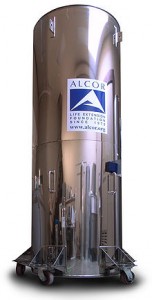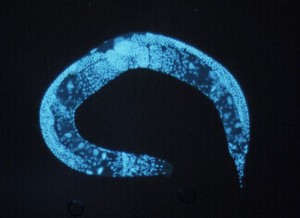Dr. Hendricks Scientific Manifesto Against Cryonics

Neuroscientist Michael Hendricks has recently published an article in the online journal MIT Technology Review warning against the technical limitations of cryonics, the low-temperature preservation of dead animals and humans for resuscitation and healing in a future when technology allows their recovery. Dr. Hendricks, Assistant Professor of Biology at McGill University, says cryonics companies are acting dishonestly, fully aware of the impossibility of their proposals, which can only partially be acceptable on a theoretical level.
Cryonics, or cryopreservation, is a technique that allows preserving a body by following a series of procedures just minutes after cardiac failure. Cryoprotectants are perfused into the organism to avoid ice formacion and cell breakage when the body is immersed in a liquid nitrogen container at less than -195.8 ºC. Cryopreservation is not reversible currently, but companies like Alcor Life Extension Foundation and some scientific literature support the possibility of bringing people back to life in the future, when technology reaches a more developed stage and the current definition of death can be considered obsolete. Since 1962, 270 people have been cryonized and are waiting for better times. The key aspect for the success of cryonics lies in the possibility of maintaining brain structures intact; cryonics champions consider that identity, personality and memories are encoded in the physical structure and patterns of the brain, and do not require brain activity to be maintained. This theory is more or less accepted by the scientific community, with some cases of people conserving their long-term memory after their brain stopped functioning for a short time. However, to date only cells and tissues have been succesfully recovered from cryopreservation. Cryonics advocates consider that cryopreservation should not be judged according to the current state of technology, and that all people wishing to do so should have their mind anatomy conserved and considered permanent patients after legal death.
The precise molecular characteristics of synapses are what make a mind and are not cryopreserved
Dr. Hendricks read a recent NY Times article about a terminally ill woman willing to pay for cryopreserving her brain. Cryonics advocates are increasingly basing their assumptions in connectomics, the science that studies the brain connections, and argues that a person´s mind is contained in that grid. If someone´s map of neuronal connections is known, it could be replicated in silico, and conscience would be effectively downloaded into a computer. Hendricks deeply disagrees with those assumptions. First, he thinks that it is currently unknown what information is required to replicate a mind; second, it is unknown if cryonized brains save all necessary information to form a mind; and third, a simulation of a brain would not be exactly the brain -the person- simulated.
The nematode Caenorhabditis elegans is a model organism widely used in neuroscience. It has 302 neurons, and all their connections are mapped. All its cells and genes are also known. and yet, all this information would not be enough to stimulate the worm´s mind. Brain activity does not derive exclusively from anatomy. Neurons communicate by releasing neurotransmitters in their synaptic spaces. The specific composition of these molecules -thousands of proteins and lipids- and the membranes where they are embedded is paramount to understand the different meaning of otherwise anatomically identical connections. To make things worse, some kinds of chemical communication do not happen through recognizable brain structures. All these characteristics are theoretically possible to preserve and retrieve from a dead tissue, but not with the current technology.
Even if it were technically possible, there is a major problem with transhumanism: The copy in the computer is not you. You wouldn´t have access to that newly created mind. It would be a new consciousness, probably identical to you, but not you.
Some people are paying $80.000 to have their brains cryonized. But the current state of technology is probably underdeveloped, not only to bring them back to life in a technically superior future, but to properly preserve what constitutes our mind, thoughts, personality and memories. Are these companies acting ethically?
Source: MIT TR


